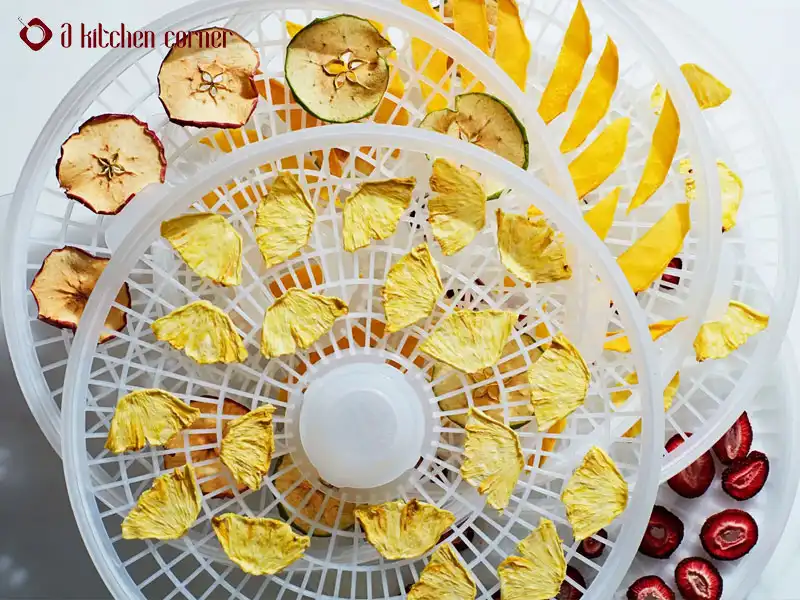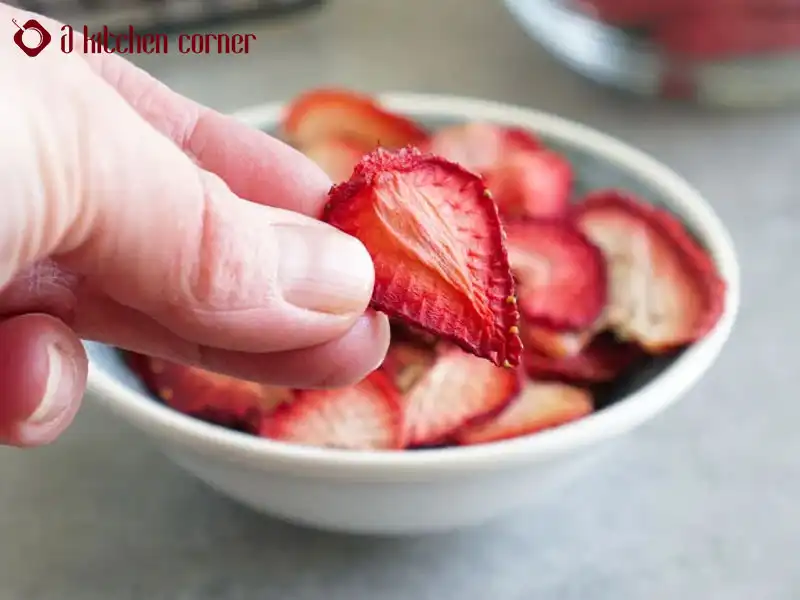Is Freeze Drying the Same as Dehydration? How to Freeze Drying At Home?

When it comes to preserving food, there are many methods to choose from. Two of the most popular methods are freezing drying and dehydrating. But are these methods the same?
In this blog post, we’ll explore is freeze drying the same as dehydration? and we’ll provide you with some tips on how to freeze dry at home.
Contents
Is Freeze Drying the Same as Dehydration?
It is worth mentioning that although all dry food is categorized as such, not all dry food is dehydrated or freeze-dried.
Dehydration involves the removal of 90-95% of moisture from the food, whereas freeze-drying removes an even higher percentage of around 98-99%.
What is freeze drying?
Freeze drying is a process that involves freezing the food and then removing the moisture through sublimation. Sublimation is the process of turning a solid directly into a gas without going through the liquid phase.
This method preserves the texture and taste of the food, making it a popular choice for foods like fruits, vegetables, and other freeze-dried products.
Freeze drying is also known for preserving the nutritional content of the food, making it a great option for those who want to maintain a healthy diet.
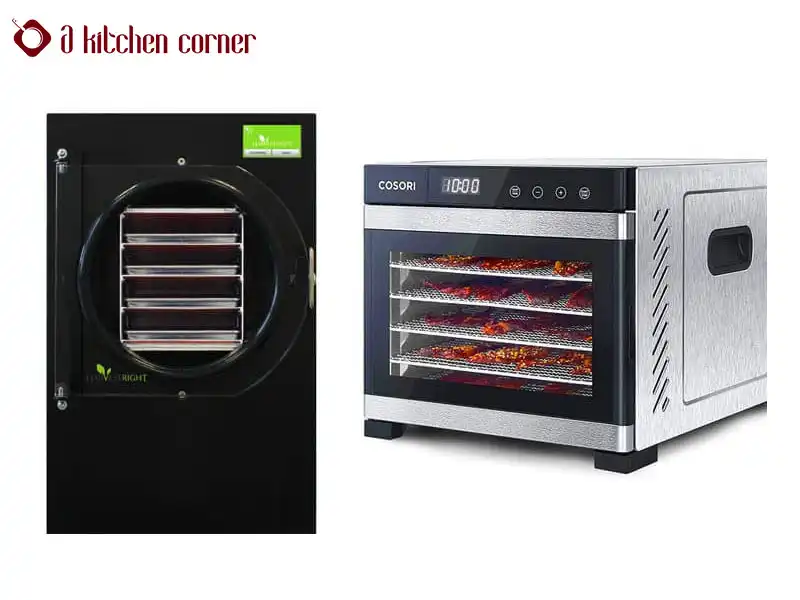
Difference between dehydrator and freeze dryer
What is dehydration?
Dehydration, on the other hand, involves removing the moisture from the food through evaporation. This method is typically done by exposing the food to heat and air.
Dehydration preserves the food by preventing the growth of bacteria and mold, making it a popular choice for jerky, dried fruits, and vegetables.
However, dehydration can cause some nutrient loss in the food, so it may not be the best option for those who want to maintain the nutritional content of their food.
>> See more: What Is a Dehydrator? How Does a Dehydrator Work?
Comparison between freeze drying vs dehydration
So, is a dehydrator the same as a freeze-dryer? While both freeze-drying and dehydration are methods of food preservation, there are some key differences between the two.
Freeze-drying preserves the texture, taste, and nutritional content of the food, while dehydration may cause some nutrient loss.
Freeze-dried food can be rehydrated easily with water, while dehydrated food may require soaking or cooking to rehydrate properly.
When it comes to food storage, freeze-dried food typically has a longer shelf life than dehydrated food.
What are the advantages and disadvantages of freeze-drying?
Advantages
There are several advantages to freeze drying:
- Extended shelf life: y removing water from the product, it inhibits the growth of microorganisms that cause spoilage, preventing foodborne illness and increasing product longevity.
- Preservation of nutritional value: Because the process involves removing water without using heat, many of the product’s nutrients are retained, including vitamins, minerals, and enzymes.
- Retaining the product’s original shape and texture: Freeze-dried foods also retain their original flavor, color, and texture, making them a popular choice for gourmet chefs and food enthusiasts.
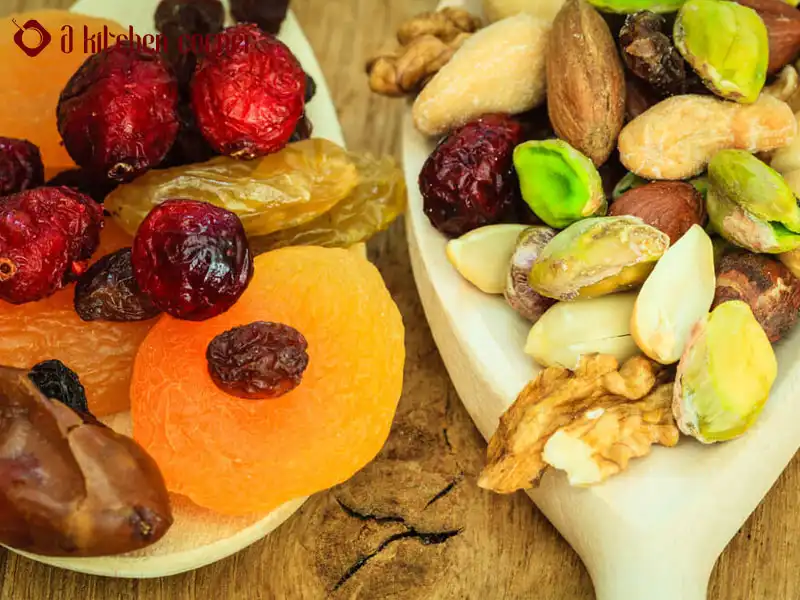
Freeze-dried foods also retain their original flavor, color, and texture.
Disadvantages
- High cost: The equipment required for freeze-drying is expensive, and the process can be time-consuming and labor-intensive.
- The need for specialized equipment and expertise: The specialized expertise required to operate the equipment and ensure the product’s quality can make the process cost-prohibitive for some businesses.
- The potential for degradation of certain compounds: This is particularly true for products that are sensitive to oxidation or heat, such as vitamins and certain drugs.
During the sublimation process, these compounds can be lost or degraded, reducing the product’s effectiveness or nutritional value.
How to freeze dry at home?
While professional freeze-drying machines can be expensive, it is possible to freeze dry food at home using a few simple tools and techniques.
Step 1: Choose Your Food
Not all foods are suitable for freeze-drying. Foods with high water content, such as watermelon or cucumber, are not recommended for home freeze-drying.
Instead, choose foods with low water content, such as berries, apples, or meat. Make sure the food is ripe and fresh before beginning the freeze-drying process.
Step 2: Pre-Freeze the Food
Before you begin the freeze-drying process, you’ll need to pre-freeze your food. Spread your food out in a single layer on a baking sheet and place it in the freezer for several hours or overnight.
This will help the food freeze evenly and speed up the freeze drying process.
Step 3: Set Up Your Freeze Dryer
You can purchase a freeze dryer for home use, but it can be expensive. A more affordable option is to use a vacuum chamber and freeze-dryer pump.
You’ll need to set up your vacuum chamber and pump according to the manufacturer’s instructions.
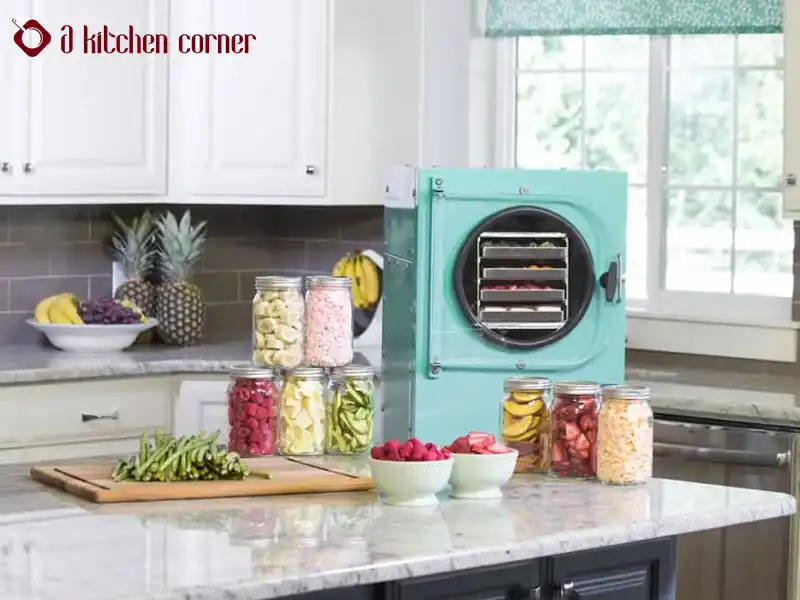
A food freeze dryer
Step 4: Load Your Food into the Vacuum Chamber
Once your vacuum chamber is set up, you can begin to load your pre-frozen food into the chamber.
Make sure the food is in a single layer and not touching each other. This will ensure that the food dries evenly and thoroughly.
Step 5: Begin the Freeze Drying Process
Once your food is loaded into the vacuum chamber, you can begin the freeze-drying process.
Turn on the vacuum pump and slowly increase the vacuum pressure until it reaches the recommended level for your specific food.
The vacuum pressure will cause the moisture content in the food to turn into ice and then sublimate, or turn directly from a solid to a gas, removing the moisture from the food.
Step 6: Monitor the Process
The freeze-drying process can take several hours or even days, depending on the type and quantity of food you are freeze-drying.
During this time, it’s important to monitor the vacuum pressure and temperature to ensure that the food is drying properly.
You can also check the food periodically to see if it is dry and ready to be removed from the vacuum chamber.
Step 7: Store Your Freeze-Dried Food
Once your food is completely dry, you can remove it from the vacuum chamber and store it in an airtight container.
Be sure to label the container with the name of the food and the date it was freeze-dried.
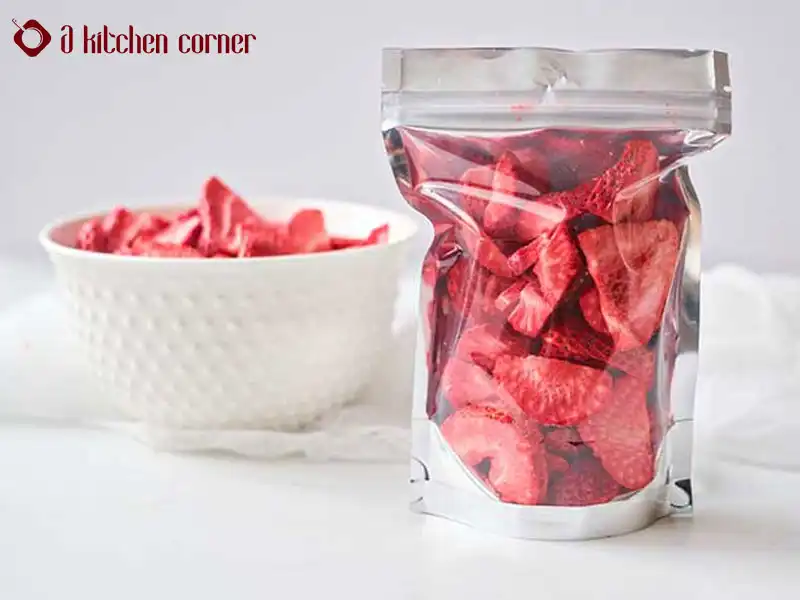
Properly stored freeze-dried food can last for several years.
Freeze drying at home is possible with the right tools and techniques.
While it may take some time and effort, the end result is a delicious and long-lasting food that can be enjoyed for years to come.
Give it a try and see for yourself how easy and rewarding it can be to make your own ready-to-eat food at home.
FAQs – Is freeze drying the same as dehydration
While it is true that anyone may create freeze-dried food, many people are curious as to whether they can do it at home with a dehydrator. The short reply is no, not really.
The majority of the moisture in food can be removed through dehydration and freeze-drying, however these two methods work quite differently and have distinct outcomes.
The bulk of the vitamins and minerals present in foods that have been freeze-dried are still present.
Because the water is removed using a “cold, vacuum” method, food that has been freeze-dried keeps its nutritional value.
However, the nutritious content of dried food is often only about 60% as high as that of comparable fresh food.
This loss is primarily attributable to the heat utilized in dehydration, which destroys the vitamins and minerals in the meal.
Compared to dehydrated foods, which have a shelf life of more like 5–15 years, freeze dried goods can have a shelf life of up to 20–25 years.
Fruit that has been frozen does not contain more sugar than fruit that has been fresh. Simply put, it’s simpler to eat more of them.
You also need to be aware of your portion sizes because it’s simpler to digest.
For a more complete supper, combine freeze-dried fruits with some protein and good fats, such as almonds.
Conclusion
Freeze drying and dehydrating are two methods of food preservation that remove moisture from food.
While dehydrating is a simpler and more accessible method, freeze drying preserves the nutritional value and flavor of foods better and extends the shelf life of the food to several years.
With some household items, you can freeze dry food at home, but specialized equipment can make the process easier and more efficient. Whether you choose to freeze dry or dehydrate, these methods can help you preserve your favorite foods for long-term storage.
We hope that after reading this blog post, you’ll get the answer to “Is freeze drying the same as dehydration? ” and some of the process to process to freeze dry food at home. Remember that there are many posts on related topics on our website. Read them and let us know how you think in the comments boxes.
You might be interested:

